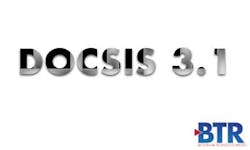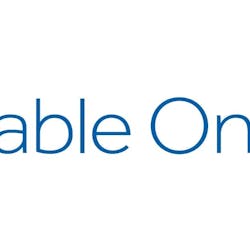CableLabs announced last month that Full Duplex (FDX) DOCSIS 3.1 now has MAC layer functionality, which will support FDX operation on the hybrid fiber/coax (HFC) link. It is focused on MAC management messaging and operation needed to enable FDX between the CMTS and cable modem.
"(Essentially) the MAC layer is how to get multiple users access to a single piece of medium at a time," said Karthik Sundaresan, principal architect, CableLabs.
FDX, which was designed by CableLabs alongside member companies, already includes support for the PHY (physical) layer. The idea is that the same channels can be used for both upstream and/or downstream.
The CMTS is full duplex and can listen and talk at the same frequency and channel at the same time thanks, in part, to echo cancellation. On the cable modem side, it is full duplex with respect to the fact that there are multiple options for the width of a channel. There typically are three sub-bands that can be designated as either upstream or downstream. The echo cancellation here refers to making sure there is no interference between channels.
Resource block assignment (RBA) refers to the capability of the CMTS to automatically place modems into interference groups.
"The split is such that the CMTS can ensure that any modem sending upstream (signals) won't destroy the downstream," Sundaresan said.
The CMTS uses sounding to figure out what the interference groups should be. The modems send signals to every other modem, which then measure the strength.
There already has been one interop event this month to begin testing components of FDX functionality. According to the CableLabs website, the next is scheduled for March 12-16 and another April 16-20. The internal calendar has more planned throughout the rest of the year, but those dates will be released at a later time, Sundaresan said. There also is an Inspired FDX Seminar to run April 17-19.
"As the Interops become more mature, maybe there are legacy or DOCSIS 3.1 modems upgraded to operate in the full duplex band," Sundaresan said. "Maybe we have some of those modems show up and (we can) do basic testing of RBA and transmission groups. (We can) start getting our feet wet with that and see if it is working."
He added that full duplex modems may come next year as the silicon is ready and then they can interoperability test a full CMTS.
"This is also how we make sure the MSOs are getting the features that are important to them," Sundaresan said. "It is also is an opportunity for (vendors) to share where they are at with operators so they can plan their strategy for their network: when they should upgrade from 3.1 to full duplex (etc.)."
Also coming down the road is support for FDX in the remote PHY realm, which currently is before a CableLabs working group. Likewise, CableLabs is developing a spec for OSS changes in support of FDX.





